Q
proton saga 1 liter berapa km
As Malaysia's beloved national car, the Proton Saga's 1.3L engine variant (note: there's actually no 1.0L option) boasts official fuel consumption figures of approximately 5.6L/100km for the manual transmission (MT) and 6.0L/100km for the CVT automatic. Translating that to real-world driving, you're looking at roughly 16-18km per liter. Of course, your actual mileage will vary based on driving habits, road conditions, and maintenance. For instance, you might see it drop to around 14km/L in heavy city traffic, but hit a solid 20km/L on the highway during steady cruising.
Under the hood, Saga's VVT-equipped engine is tuned for decent fuel efficiency. To keep it sipping rather than guzzling, we recommend sticking to the factory-recommended engine oil viscosity – think 5W-30 – and maintaining proper tire pressure at 240kPa. These simple steps go a long way in maximizing your fuel economy.
Now, when comparing to rivals like the Perodua Bezza with its smaller 1.0L engine, it's important to consider the balance between weight and power. Saga's 1.3L mill still manages to deliver acceptable performance even when the air-con is cranked up and the car is fully loaded – a practical plus for local driving conditions.
Malaysian Saga owners can get a clearer picture of their real-world fuel usage by logging refueling data through the MyProton APP. Additionally, signing up for Proton's Eco Drive training courses is a smart move – you'll pick up handy tips like anticipating traffic to minimize harsh braking and sticking to the 60-90km/h sweet spot for optimal efficiency. Trust us, these little adjustments can make a noticeable difference to your long-term running costs.
Special Disclaimer: This content is published by users and does not represent the views or position of PCauto.
Related Q&A
Q
How much does it cost to maintain a Proton Saga 2022?
Based on Proton Saga 2022's official maintenance guidelines and real-world conditions in the Malaysian market, the annual upkeep costs for this car typically range from RM800 to RM1,200, though this figure can vary significantly depending on your annual mileage and the specific services required. Of course, this depends heavily on your mileage and the specific services you opt for. For regular servicing – think oil changes, oil filter replacements, and the basics – you're looking at around RM200 to RM300 per session. When it comes time for a major service, which might involve changing brake fluid, transmission oil, and other key components, expect to shell out between RM500 and RM800.
Being a homegrown Malaysian brand, Proton Saga benefits from relatively affordable零部件 prices and an extensive network of service centers, which definitely helps keep long-term ownership costs in check. Sticking to regular maintenance isn't just about prolonging your car's lifespan; it's crucial for keeping you safe on the road too. We always recommend following the maintenance manual to the letter and choosing authorized Proton service centers – that way, you're guaranteed genuine parts and professional expertise under the hood. And if you're watching your wallet, keep an eye out for Proton's occasional service promotions; they can help you trim those costs even further.
Q
How is the ride and handling of the 2022 Proton Saga?
The 2022 Proton Saga keeps the brand's focus on affordability and practicality when it comes to driving feel and handling. The overall setup leans towards comfort, making it a solid fit for Malaysian city roads. It uses a MacPherson strut front and torsion beam rear suspension, which does a decent job soaking up small bumps and road imperfections. Sure, there's noticeable body roll when taking corners at speed, but that's pretty standard for this class of car. The steering is light and easy, even for female drivers, and the CVT gearbox is much smoother than the old 4AT it replaces – though it does feel a bit slow to respond when you hit the gas hard.
One thing that stands out is the Saga's 145mm ground clearance, which gives it an edge when dealing with those common unpaved or rough patches you find around Malaysia. On the safety front, it comes standard with ABS+EBD and dual airbags, while higher trims add stability control – that's pretty competitive for the price point.
The 1.3L engine isn't going to win any drag races, but with 92 horsepower pushing around a car that barely tips the scales over a ton, it's more than enough for zipping around town. The official fuel consumption is 5.6L/100km, so it's easy on the wallet too.
For first-time buyers on a budget, the Saga's well-rounded package, combined with Proton's widespread after-sales network across the country makes it a really compelling choice for an entry-level sedan. If you spend a lot of time stuck in traffic, you'll definitely appreciate that comfortable suspension setup.
Q
What is the warranty on the 2022 Proton Saga?
The 2022 Proton Saga comes with a solid 5-year or 150,000 km factory warranty (whichever comes first), covering key components like the engine and transmission. The anti-rust warranty stretches to 7 years with unlimited mileage. This warranty package is pretty competitive in Malaysia's compact car segment and should help keep long-term ownership costs in check for drivers.
Important to note though – to keep that warranty valid, you've gotta stick to regular servicing at authorized Proton service centers. Skipping that could void your coverage, so make sure you hold onto all those service records, folks. On top of that, Proton throws in 24-hour roadside assistance for extra peace of mind when you're out and about.
Malaysia's hot and rainy weather can really test a car's durability, so going for a model with a lengthy warranty just makes smart sense. Other local players like Perodua also offer similar long-haul warranty deals, so it's worth shopping around before making your final decision.
Q
How reliable is the 2022 Proton Saga?
The 2022 Proton Saga, one of Malaysia's best-selling locally produced entry-level sedans, offers a reliability profile that aligns with expectations for its price point. It is equipped with a 1.3L naturally aspirated engine and a 4-speed automatic transmission. The technology, while proven, is not the latest, but it benefits from its mechanical simplicity and proven reliability over years of market presence. According to owner feedback, the mechanical failure rate is low with proper maintenance, and Proton's nationwide after-sales network simplifies repairs.
In terms of safety, the vehicle comes standard with dual airbags, ABS with EBD, and ISOFIX child seat anchors—a package that is quite competitive for its segment. It should be noted, however, that Electronic Stability Control (ESC) is not available on the base variant. If the budget allows, upgrading to a higher trim level for this feature is recommended.
A noteworthy point is that Proton's quality control has shown consistent improvement following its collaboration with Geely. For the 2022 model year, refinements were made to details such as sound insulation and interior panel gaps. Nevertheless, cost constraints mean that common issues like noticeable wind noise at highway speeds remain. For family users prioritizing economy, the car's 5-year unlimited mileage warranty and low maintenance cost (approximately RM200 per service session) are significant advantages. However, those seeking more advanced driver-assistance technologies would need to consider more advanced models.
Overall, the Saga has proven its long-term adaptability to Malaysia's hot and rainy climate, making it a practical and sensible choice for budget-conscious buyers.
Q
What is the resale value of a Proton Saga?
The Proton Saga, one of Malaysia's most beloved budget-friendly sedans, sees its used car value fluctuate pretty noticeably based on the model year, mileage, condition, and market demand. Industry data shows that a 3-year-old Saga typically retains around 50-60% of its original price, and even at 5 years old, it's still holding steady at roughly 40%. That actually outperforms some competitors in its class, thanks to its low maintenance costs, widespread after-sales network, and solid market reputation.
Something to keep in mind: top-spec trims like the Premium S, with their extra features, usually hold 5-8% more value than the base models. And a Saga with a complete, regular service history? That can fetch a 10% premium when you resell. If you're looking to boost your car's resale value, it's smart to hang onto those service records from when it was under the factory warranty and steer clear of major modifications that mess with the original specs.
Also, the Saga's 1.3L engine paired with that tried-and-tested gearbox delivers reliable fuel efficiency – a big checkmark for used car buyers. Malaysia's second-hand car market keeps steady demand for practical, economical rides like the Saga, especially among first-time car owners. So, price it right, and your used Saga should move pretty quick.
Q
Is the 2022 Proton Saga a good first car?
The 2022 Proton Saga makes total sense as a first car. It's got a solid rep in Malaysia for being a great value workhorse – easy on the wallet to buy, even easier to keep running, which is perfect if you're a first-time buyer watching your budget. Under the hood, you've got a 1.3L naturally aspirated engine. Now, it's no rocket ship, but trust me, it's more than enough for zipping around town on your daily commute.
Space-wise, for a small sedan, it's surprisingly roomy. You can squeeze five adults in there without too much hassle, and the boot? A decent 420 liters – plenty for family errands or a weekend getaway. Safety kit? It's got the basics covered: ABS, EBD, and dual airbags. Nothing flashy, but exactly what you'd expect in this price bracket.
One thing that really works for the Saga is Proton's service network. They're all over the country, so getting it serviced or fixed is a breeze. Parts are easy to come by and won't break the bank, which is a big plus when you're just starting out.
Driving it? Super laid-back. The steering is light, the size is just right – not too big, not too small – so navigating tight city streets and squeezing into parking spots is a cinch, even for new drivers. I also dig that they've kept the traditional physical buttons. No messing around with finicky touchscreens for every little thing; you just reach out and press – simple and intuitive. That's a big win for folks who value functionality over fancy tech.
Now, if you're all about the latest gadgets, you might wanna look at something more upmarket. But as an entry-level family car, the 2022 Saga is a really down-to-earth choice. And hey, let's not forget Malaysia's weather – hot and humid with those monsoon downpours. Proton's tweaked the air-con to blow nice and cold, and the body's rust-proofed to handle the elements. It's like they built it specifically for our local conditions. Can't argue with that.
Q
What type of air filter does the 2022 Proton Saga use?
The 2022 Proton Saga is equipped from the factory with a dry, paper-type air filter (typically part number S650310010). This filter employs a multi-layered fibrous structure designed to effectively capture dust, pollen, and other particulate matter while maintaining low intake air resistance, which is essential for the combustion efficiency of the 1.3L CamPro VVT engine. In contrast to the oiled or foam filters common in high-performance applications, these paper filters are cost-effective and designed as disposable replacement items.
The recommended replacement interval is every 15,000 to 20,000 kilometers or once a year. However, this interval should be shortened if the vehicle is frequently driven on dusty or unpaved roads. Particular attention should be paid to regular inspection in Malaysia's tropical climate, as high humidity can accelerate moisture absorption in the filter element. Some owners opt to upgrade to high-flow, reusable air filters like those from K&N or BMC. It is important to note that to fully realize their potential benefits, a professional ECU remap is typically required to properly calibrate the engine's air-fuel ratio for the increased airflow. For typical daily commuting, using a filter that meets original equipment specifications offers the best balance of economy and engine protection.
When selecting a third-party filter, it is crucial to verify that it complies with recognized industry standards such as JIS D1611 or ISO 5011. Low-quality, substandard filters may lead to increased engine wear and reduced fuel economy.
Q
Does the 2022 Proton Saga have push-to-start?
The 2022 Proton Saga doesn't come with push-to-start ignition; this entry-level sedan sticks with the traditional keyed system. The focus here is on practical features instead, like the standard 7-inch touchscreen, Bluetooth connectivity, and reverse camera. For Malaysian buyers, push-to-start is usually reserved for higher-spec models or B-segment and above – you'll find it on the Proton X50 or X70, for example, where it adds that extra layer of convenience.
Sure, it misses out on keyless entry, but the Saga still holds its ground as one of the country's best-selling national cars thanks to its wallet-friendly price tag, impressive fuel economy (5.6L/100km), and Proton's solid after-sales network. If push-to-start is a must-have for you, third-party kits are available, but keep in mind this might affect your factory warranty. Your safest bet? Go through a Proton authorized service center for the retrofit.
Truth be told, in Malaysia's hot and humid climate, a good old mechanical key can be more reliable. That's probably why plenty of budget-friendly cars still stick with this tried-and-tested setup.
Q
How does the 2022 Proton Saga compare to the Perodua Bezza?
Malaysia's favorite B-segment sedans for 2022, the Proton Saga and Perodua Bezza, each bring their own strengths to the table. The Saga packs a 1.3L four-cylinder engine churning out 95PS, paired with a 4AT gearbox. It delivers smooth power delivery and a comfort-tuned chassis, making it a solid family hauler. ABS and dual airbags come standard across the range, with the higher trims adding stability control. The interior leans into practicality, and space-wise, it has the Bezza beat.
On the flip side, the Bezza offers a choice of 1.0L and 1.3L engines. ISOFIX child seat anchors are standard across all variants, and the top-spec model gets the ASA 3.0 driver assistance suite, giving it an edge in tech. However, rear passenger space can feel a bit tight.
Both models tick the boxes for Malaysian buyers looking for economy and practicality. The Saga wins on value-for-money and interior room, while the Bezza shines brighter when it comes to fuel efficiency and active safety tech. It's worth noting both have scored a 4-star ASEAN NCAP safety rating, so you're covered on that front. Ultimately, the choice boils down to your priorities and budget. If you want a bit more engagement behind the wheel, take the Saga for a spin. But if low running costs are your main focus, the Bezza is the way to go.
Q
Is the 2022 Proton Saga comfortable for long drives?
The 2022 Proton Saga, as the entry-level sedan from Malaysia's homegrown brand, delivers a solid but unremarkable performance when it comes to long-distance driving comfort. The seats, featuring ergonomic design with decent lumbar support, handle those typical 4-5 hour interstate drives around Malaysia just fine. However, the rather firm suspension setup does take a slight toll on comfort when tackling bumpy roads. In terms of noise insulation, tire roar becomes noticeable once you exceed 110km/h, but it's still within the acceptable range for its class. For buyers who frequently hit the highway, I'd recommend springing for the higher-spec leather seat variant to up the comfort ante. Also, regular wheel alignments and tire maintenance can really help cut down on long-drive fatigue. If you're dead set on a better long-distance experience within a similar price bracket, you might want to stretch your budget for a B-segment sedan. That said, the Saga still holds its own with strong fuel efficiency and low maintenance costs – its official 5.6L/100km fuel consumption figure is definitely a draw for folks regularly cruising the North-South Expressway.
Latest Q&A
Q
What kind of oil does 2018 Passat use?
For the 2018 Volkswagen Passat in Malaysia, the recommended oil specs typically call for synthetic oils that meet VW 502 00 or VW 504 00 standards, with viscosity grades of 5W-30 or 5W-40 being the go-to choices. Your final pick should really depend on your actual driving conditions and habits though – here in Malaysia's hot climate, for example, 5W-40 might be the better bet thanks to its stronger high-temperature protection.
Sticking to regular oil changes is huge for keeping your engine running strong long-term. As a general rule, aim to change it every 10,000 kilometers or 12 months, whichever comes first. Also, when you're picking out oil, always double-check that it has international certifications like API SN or ACEA A3/B4 – that's your guarantee of reliable quality.
If your Passat has a diesel engine or is a high-performance variant, it might need a specific oil type, so your best move is to check the owner's manual or have a chat with an authorized service center. It's also handy to know what those oil numbers mean – "5W" tells you about cold-weather flow, while "40" refers to hot-temperature thickness. A little knowledge here goes a long way in helping you make the smartest choice for your car.
Q
Does a 2018 Volkswagen Passat have a turbo?
The 2018 Volkswagen Passat in Malaysia does come with a turbocharged engine, specifically a 1.8-liter TSI turbocharged petrol unit. This engine pushes out 180 horsepower and 250 Nm of torque, and it's a solid combo of turbo tech and direct injection that delivers great power while still being kind on fuel – perfect for both city commuting and those longer highway drives we Malaysians love. Turbocharging works by compressing the intake air, which boosts engine efficiency and power, so you get plenty of torque even at low revs, making acceleration feel smooth and effortless.
On top of that, the 2018 Passat also gets VW's DSG dual-clutch gearbox, which really sharpens up the shifts and makes the whole driving experience that much more engaging. For Malaysian buyers, a turbo engine isn't just about daily driving needs; it also gives you that extra oomph for confident overtaking on the highway. And let's not forget, Volkswagen's reputation for reliability and their widespread after-sales network here mean owning one is pretty hassle-free.
If turbo tech has caught your interest, it's worth checking out turbo models from other brands like Toyota or Honda too – each has their own engineering twists. But when it comes to balancing power and fuel efficiency, VW's TSI engines really stand out from the pack.
Q
Are there any recalls on a 2018 VW Passat?
For the record, the 2018 Volkswagen Passat was subject to safety-related recalls in certain markets. In North America, for instance, a recall was issued due to a potential fault in the fuel pump control unit that could lead to stalling. As for the Malaysian market, it's best to refer to official Volkswagen announcements there. We recommend owners check via the recall inquiry page on Volkswagen Malaysia's website by entering their Vehicle Identification Number (VIN) or contact an authorized service center directly, as recall situations can vary by region based on local regulations and vehicle specifications.
Staying on top of recall information is a key part of vehicle maintenance, especially for updates involving critical components like airbags, fuel systems, or electronic stability programs. Even if your Passat isn't part of a recall, sticking to the manufacturer's maintenance schedule is crucial to keep it running at its best. For more details on common upkeep points specific to the Passat—think DSG transmission care or turbocharged engine maintenance tips—reaching out to local Volkswagen technicians is the way to go for personalized advice.
Q
What is the fuel consumption of the 2018 Volkswagen Passat?
The 2018 Volkswagen Passat's fuel economy in the Malaysian market varies depending on the powertrain. The 1.8-liter TSI turbocharged engine variant delivers a combined fuel consumption of around 6.5 liters per 100 kilometers, while the 2.0-liter TSI model is slightly thirstier at approximately 7.2 liters per 100 kilometers. Real-world figures, of course, can fluctuate based on driving habits, road conditions, and maintenance upkeep.
Riding on Volkswagen Group's proven MQB platform and paired with a DSG dual-clutch transmission, this model strikes a nice balance between power delivery and fuel efficiency – ideal for both city commutes and highway stretches across Malaysia. It's worth highlighting how turbocharging technology effectively boosts performance from smaller-displacement engines while keeping fuel consumption relatively low, a trend we've seen increasingly adopted in mid-size sedans here in the local market.
To keep your Passat running at its most efficient, regular maintenance is key. Make sure to replace the air filter and spark plugs as scheduled, and always use engine oil that meets the manufacturer's specifications. These simple steps go a long way in preserving optimal fuel economy over time.
If you're in the market for a used Passat, do yourself a favor and check the complete service history through official channels. It's the best way to ensure the vehicle still performs as well as it did when it left the factory.
Q
Why is my 2018 Passat not starting?
There are a few common reasons why your 2018 Passat might be refusing to start. First up, battery issues. Malaysia's hot and humid climate can really take a toll on battery life, so it's worth checking if the voltage has dropped below 12.4 volts or if the terminals are looking corroded.
Next, a faulty starter motor or alternator could be the culprit – both can leave you short on electrical power. Don't rule out fuel system problems either, like a busted fuel pump or a clogged fuel filter. These tend to happen more often if you've been using low-quality petrol regularly.
Then there's the ignition system; worn spark plugs or a dodgy ignition coil can definitely make starting a hassle. If your Passat has a smart key, don't forget to check if the key fob battery is dead, which might stop the car from recognizing it.
If any warning lights are flashing on the dashboard – especially the check engine light – hook up an OBD scanner to read the trouble codes as soon as you can. For regular maintenance, swap out the battery every 2-3 years, stick to the recommended fuel grade, and replace the spark plugs around every 60,000 kilometers. These simple steps can go a long way in preventing starting headaches. If you've checked all this and still can't get it going, best to reach out to an authorized service center for a professional diagnosis.
View MoreRelated News

Proton's fourth-generation Saga revolution, brand new 1.5L four-cylinder engine, equipped with ADAS for the first time
MichaelSep 9, 2025
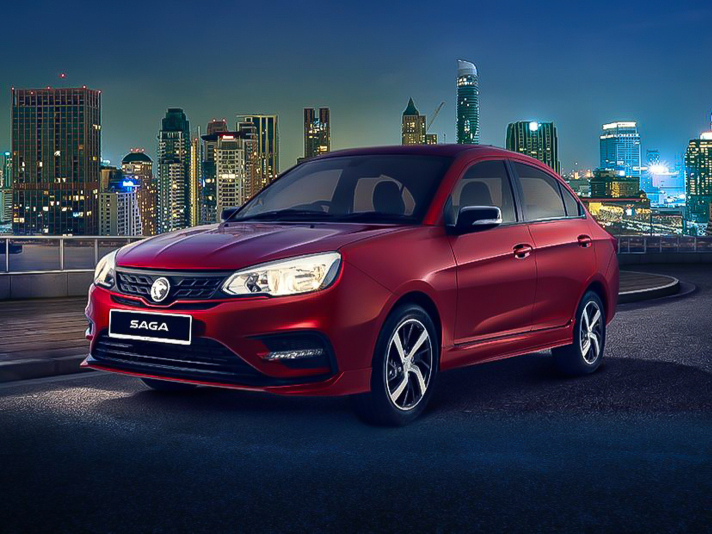
Proton Saga Interior Review: Affordable Yet Stylish for Everyday Use
WilliamJul 17, 2025
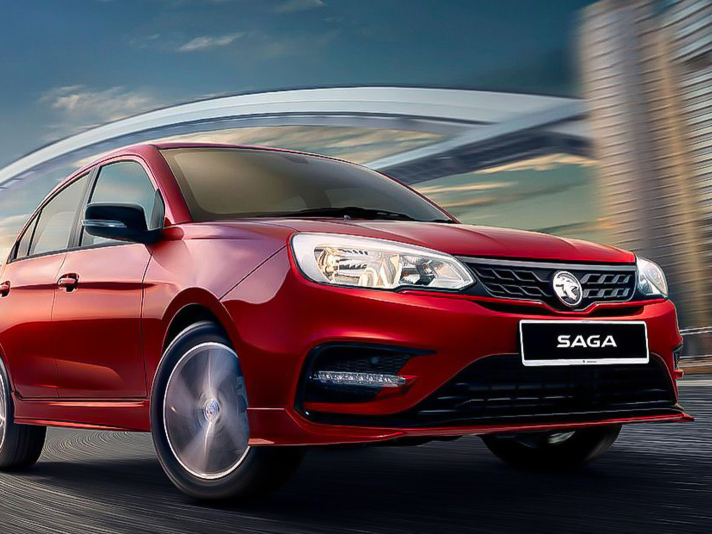
2025 Halfway Mark: All-New Proton Saga Coming Soon!
JohnMay 30, 2025
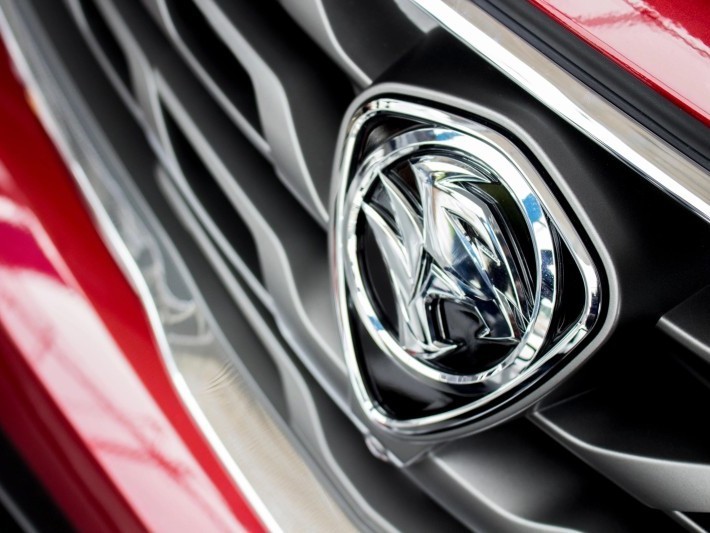
Proton Recorded Sales of 13,918 Vehicles in March, Marking a Significant MOM Increase of 23.9%
AshleyApr 10, 2025
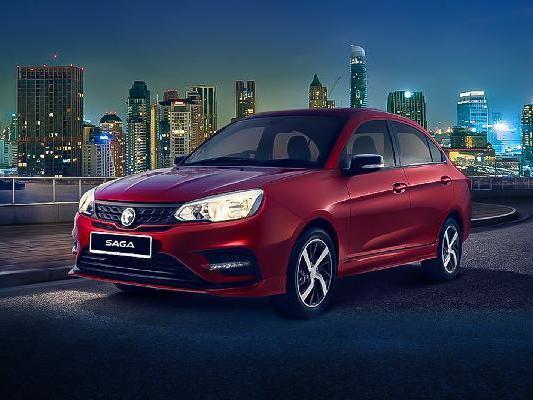
Proton Saga: A Clear Overview of Configurations and Costs of models
LienMar 25, 2025
View More





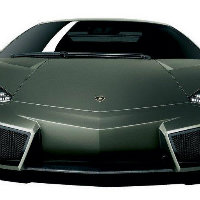






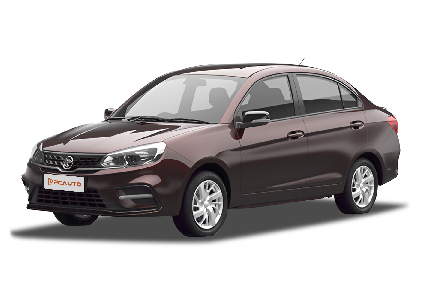





Pros
Cons